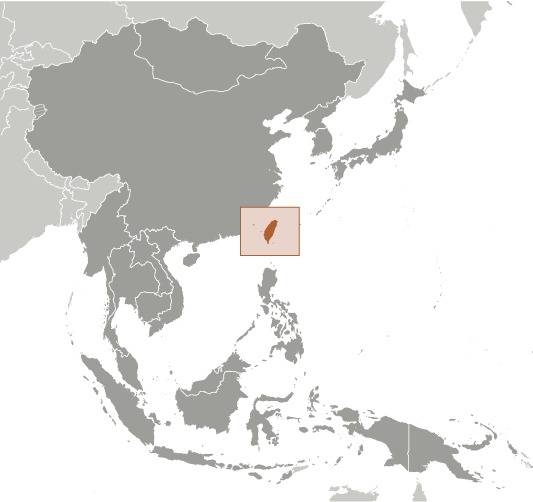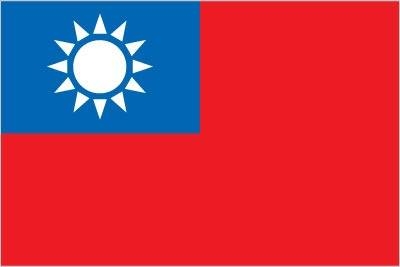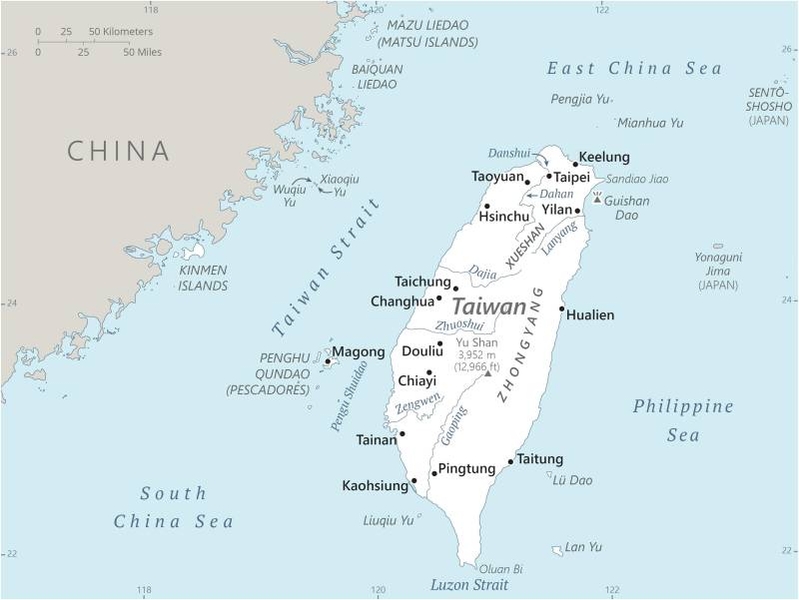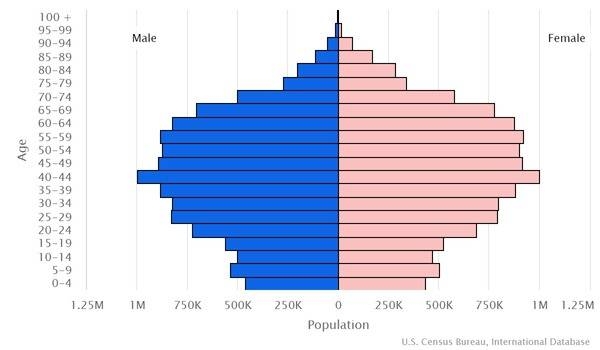Country Summary




Introduction
Background
First inhabited by Austronesian people, Taiwan became home to Han immigrants beginning in the late Ming Dynasty (17th century). With the communist victory in the Chinese civil war in 1949, the Nationalist-controlled Republic of China government and 2 million Nationalists fled to Taiwan and continued to claim to be the legitimate government for mainland China and Taiwan based on a 1947 Constitution.
Geography
Area
total: 35,980 sq km
land: 32,260 sq km
water: 3,720 sq km
Climate
tropical; marine; rainy season during southwest monsoon (June to August); persistent and extensive cloudiness all year
Natural resources
small deposits of coal, natural gas, limestone, marble, asbestos, arable land
People and Society
Population
23,580,712 (2022 est.)
Ethnic groups
Han Chinese (including Holo, who compose approximately 70% of Taiwan's population, Hakka, and other groups originating in mainland China) more than 95%, indigenous Malayo-Polynesian peoples 2.3%
Languages
Mandarin (official), Taiwanese (Min Nan), Hakka dialects, approximately 16 indigenous languages
Religions
Buddhist 35.3%, Taoist 33.2%, Christian 3.9%, folk religion (includes Confucian) approximately 10%, none or unspecified 18.2% (2005 est.)
Population growth rate
0.04% (2022 est.)
Government
Government type
semi-presidential republic
Capital
name: Taipei
Executive branch
chief of state: President TSAI Ing-wen (since 20 May 2016); Vice President LAI Ching-te (since 20 May 2020)
head of government: Premier SU Tseng-chang (President of the Executive Yuan) (since 11 January 2019); Vice Premier SHEN Jong-chin (Vice President of the Executive Yuan) (since 19 June 2020)
Legislative branch
description: unicameral Legislative Yuan (113 seats; 73 members directly elected in single-seat constituencies by simple majority vote, 34 directly elected in a single island-wide constituency by proportional representation vote, and 6 directly elected in multi-seat aboriginal constituencies by proportional representation vote; members serve 4-year terms)
Economy
Economic overview
high-income East Asian economy; most technologically advanced computer microchip manufacturing; increasing Chinese interference threatens market capabilities; minimum wages rising; longstanding regional socioeconomic inequality
Real GDP (purchasing power parity)
$1,143,277,000,000 (2019 est.)
Real GDP per capita
$24,502 (2018 est.)
Agricultural products
rice, vegetables, pork, cabbages, poultry, sugar cane, milk, eggs, pineapples, tropical fruit
Industries
electronics, communications and information technology products, petroleum refining, chemicals, textiles, iron and steel, machinery, cement, food processing, vehicles, consumer products, pharmaceuticals
Exports
$388.49 billion (2019 est.)
Exports - partners
China 26%, United States 14%, Hong Kong 12%, Japan 7%, Singapore 7%, South Korea 5% (2019)
Exports - commodities
integrated circuits, office machinery/parts, computers, refined petroleum, liquid crystal displays (2019)
Imports
$308.744 billion (2019 est.)
Imports - partners
China 21%, Japan 16%, United States 11%, South Korea 6% (2019)
Imports - commodities
integrated circuits, crude petroleum, photography equipment, natural gas, refined petroleum (2019)
Exchange rates
New Taiwan dollars (TWD) per US dollar -
Page last updated: Tuesday, August 02, 2022
